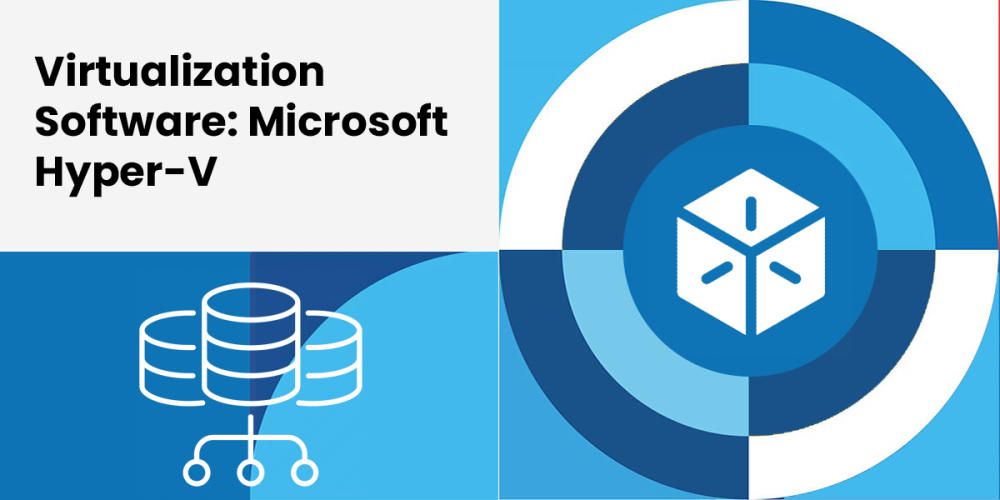
As organizations reassess their virtualization needs, many are seeking alternatives to VMware due to recent changes in its pricing model and ownership. Microsoft Hyper-V emerges as a strong contender, offering robust features, seamless integration with existing Microsoft products, and cost-effective solutions. Let’s review some benefits of Hyper-V.
Cost-Effectiveness
One of the primary reasons businesses consider switching from VMware to Hyper-V is cost savings. Hyper-V is included with Windows Server at no additional cost, making it an attractive option for organizations already utilizing Microsoft products. This integration eliminates the need for separate licensing fees, reducing overall expenses.
Seamless Integration
Hyper-V integrates seamlessly with other Microsoft technologies, such as System Center and Azure. This compatibility ensures a smooth operation across your entire IT ecosystem, providing a unified management experience. Organizations using Windows Server, Active Directory, or Microsoft SQL Server will find Hyper-V’s integration particularly beneficial.
Robust Feature Set
Hyper-V offers a comprehensive set of features that rival VMware’s capabilities. Key features include:
- Live Migration: Move running virtual machines between physical hosts without downtime.
- Dynamic Memory: Automatically adjust the amount of memory allocated to VMs based on demand.
- Enhanced Security: Benefit from built-in security features like Shielded VMs, which protect against data theft and tampering.
- High Availability: Ensure business continuity with failover clustering and replication.
Scalability and Performance
Hyper-V supports large-scale deployments, accommodating the needs of growing businesses. With the ability to manage thousands of virtual machines and support high-performance workloads, Hyper-V is designed to handle demanding enterprise environments.
Simplified Management
Microsoft’s management tools, such as Hyper-V Manager and Windows Admin Center, provide intuitive interfaces for managing virtualized environments. These tools simplify administrative tasks, from provisioning and monitoring VMs to automating complex workflows.
Hybrid Cloud Capabilities
Hyper-V’s integration with Azure offers hybrid cloud capabilities that extend your on-premises infrastructure to the cloud. This hybrid approach allows businesses to leverage the scalability and flexibility of Azure while maintaining control over their local resources. Features like Azure Site Recovery and Azure Backup provide additional layers of protection and disaster recovery options.
Community and Support
Microsoft’s extensive support network and active community forums ensure that help is readily available when needed. Whether through official support channels or community-driven solutions, businesses can rely on comprehensive assistance for their Hyper-V deployments.
If your organization is currently using VMware, there are some important considerations when transitioning to Hyper-V:
Learning Curve
Transitioning from VMware to Hyper-V involves a learning curve for IT staff. Administrators familiar with VMware’s interface and tools may require training to effectively manage Hyper-V environments.
Feature Parity
Although Hyper-V offers a robust feature set, there are certain advanced features and tools in VMware that may not have direct equivalents in Hyper-V. Organizations relying heavily on specific VMware functionalities might need to adjust their workflows or find workarounds.
Migration Complexity
Migrating from VMware to Hyper-V can be complex and in some cases, time-consuming. Proper planning and execution are essential to minimize downtime and ensure a smooth transition. Organizations may need to invest in migration tools or professional services to facilitate the process.
Performance Considerations
In certain scenarios, Hyper-V’s performance may not match VMware’s, particularly in environments with highly specialized workloads. Thorough testing and benchmarking are recommended to ensure Hyper-V meets performance requirements.
The Bottom Line
Microsoft Hyper-V presents a compelling alternative to VMware, offering cost savings, seamless integration with existing Microsoft products, and a robust feature set.
However, organizations currently using VMware should carefully evaluate potential downsides.
If you’re considering a switch from VMware, our team is here to help you assess the benefits and challenges to ensure a successful transition. Contact us today to learn more about how we can assist with your transition to Hyper-V.
